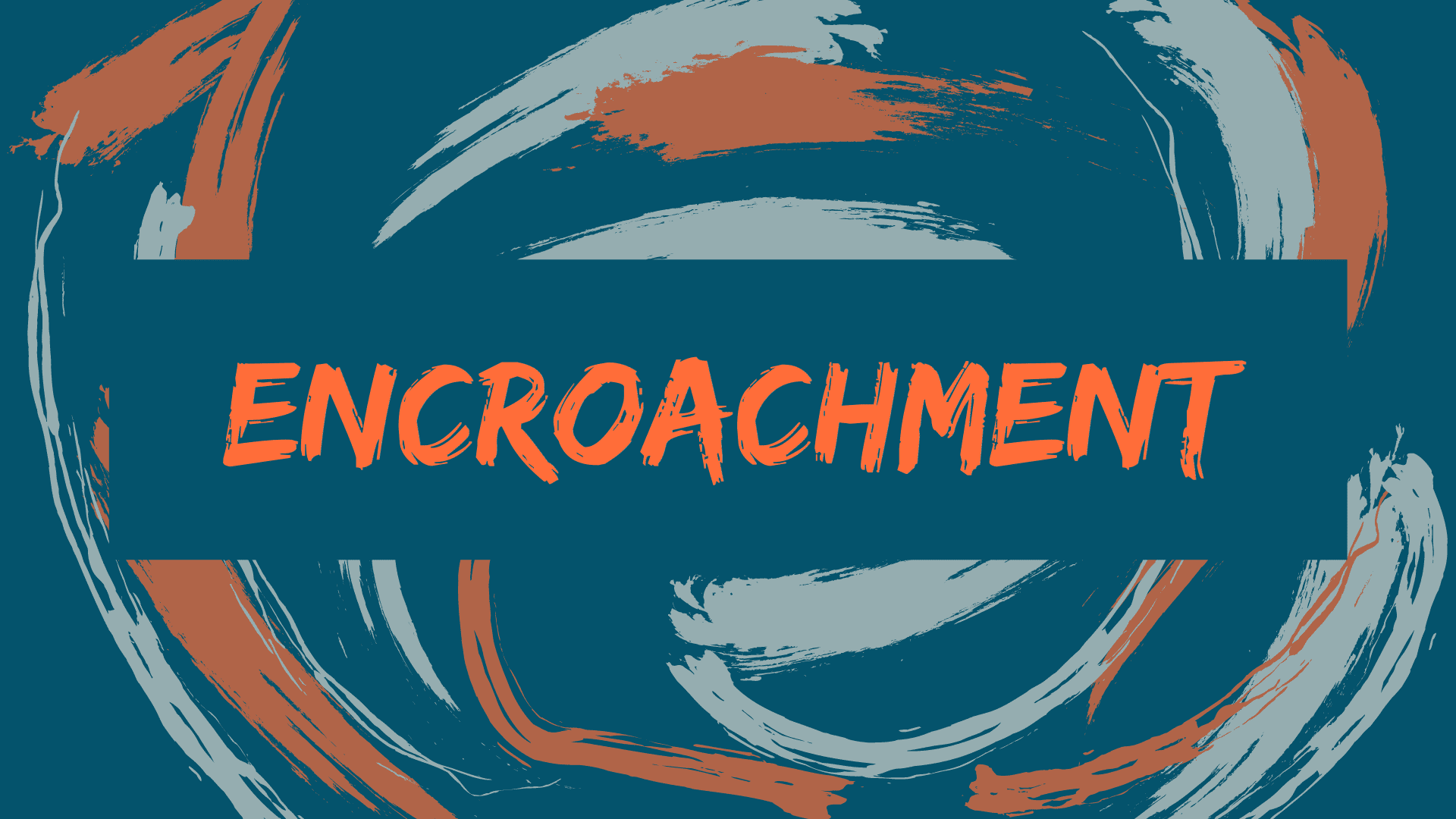Definition: Encroachment occurs when a property owner violates a neighbor’s property rights by occupying their property.
Encroachment is also known as intrusion or sometimes invasion in violent terms. It can be a legal term regarding boundaries between two or more properties.
The encroachment is not only confined to the legal framework; it is a common phenomenon. For example, when law enforcement is not rigid, traders encroached on roads for commuters during odd hours.
In encroachment, a property owner can construct a building on or extend a structure to the neighbor’s land or property intentionally or otherwise.
It could be any vegetation or artificial object. It also includes the unlawful removal of the natural vegetation of a place, thus altering the topography.
This article will focus on structural encroachment relating to boundary trespass.
Structural encroachment occurs when a property owner unlawfully builds or extends structures onto a neighbor’s land without permission.
A typical by-law regarding encroachment reads:
“No person shall erect, place or maintain, or cause to be erected, placed or maintained, an encroachment of any kind on public lands, or on any right-of-way or easement in favor of the government, except where permitted to do so in accordance with the law.”
Some steps can be taken to avoid legal claims, such as permits can be granted to encroach onto a third party’s land or property temporarily or permanently.
Structural encroachment is also when a property owner extends a structure onto the public domain, such as the streets, highways, or government property.
Mostly, the municipal government owns sidewalks and residential streets. Consequently, the authorities can remove a property owner who erects structures, such as sheds, boundaries, trees, and flowers, that encroach on public property.
Examples of Encroachment
Some real-life examples of encroachment are:
- Dumping or storage of garbage or waste on someone else’s property
- Car parking which could damage the grass
- Unauthorized paved or unpaved pathways
Forms of Encroachment
Structural encroachment can be minor or major encroachment.
- A simple conversation can settle a minor encroachment. For instance, gardens or fences overlapping property lines constitute a minor encroachment.
- Major encroachment can require court intervention. For example, extending a building over property lines or an overhanging tree branch could cause serious injury.
Encroachment Vs Easement
In easement, the property owner can enter, extend, or build structures on another owner’s property without transfer of title. Compensation is involved in providing permission. Sometimes, it can be a verbal agreement.
Encroachments are the unauthorized extension on the neighbor’s property, while easements are agreed-on actions.
Unaddressed encroachments can become prescriptive easements. A prescriptive easement is created when the encroacher openly uses a portion of another’s property without their knowledge or consent. If no one reports this action over a long period, the encroacher gets a legal right to use the property.
Encroachment Vs Encumbrance
Encumbrance is a burden or restriction. It is a liability or charge attached to or binding a property that directly affects its value or obstructs its usage. It poses restrictions on property usage. For example, it is common in estates where property owners can only build according to a preset standard.
Avoiding and Handling Encroachments
The following steps can help avoid potential encroachment:
- Property Surveys: A property survey confirms the property’s boundary lines and legal descriptions. It is important to get the survey done when buying a new property.
- Awareness: Property owners must know the extent of contractual property rights and privileges. They must know the exact location of their neighbor’s property lines so they do not infringe.
The civil way to handle encroachment includes:
- Dialogue: Engagement can resolve the issue of minor encroachments, such as overlapping gardens.
- Compensation: If the encroachment is irreversible, such as a physical structure extending out of the boundary, it may be beneficial to negotiate a financial settlement and land terms with the other party. In this case, compensation will be necessary to receive permission to encroach.
- Outright Sale or Purchase: For the party suffering encroachment, it may be best to sell the entire property to the other party; vice versa for the party committing the intrusion.
- Legal Action: If the party committing the encroachment is not cooperating, the best option would be to take them to court and receive financial compensation.
In some situations, encroachment on government land cannot be avoided. The encroacher must get the permit for the encroachment. The permit could be temporary for residences and businesses or a permanent, temporary encroachment for developers or contractors.
Summary
An encroachment is an unauthorized intrusion onto a neighboring property by extending a physical structure above or below the land’s surface.
Common remedies in the event of encroachment include negotiation, selling relevant land, granting an easement, or injunctive relief—some laws guide litigation on encroachment matters in different jurisdictions.
Intentional and unintentional encroachments happen, and it is important to deal with the issue as soon as it becomes noticed. Overlooking the issue could cause the encroachment to become a prescriptive easement, which means the invader gets permanent rights for the property.
